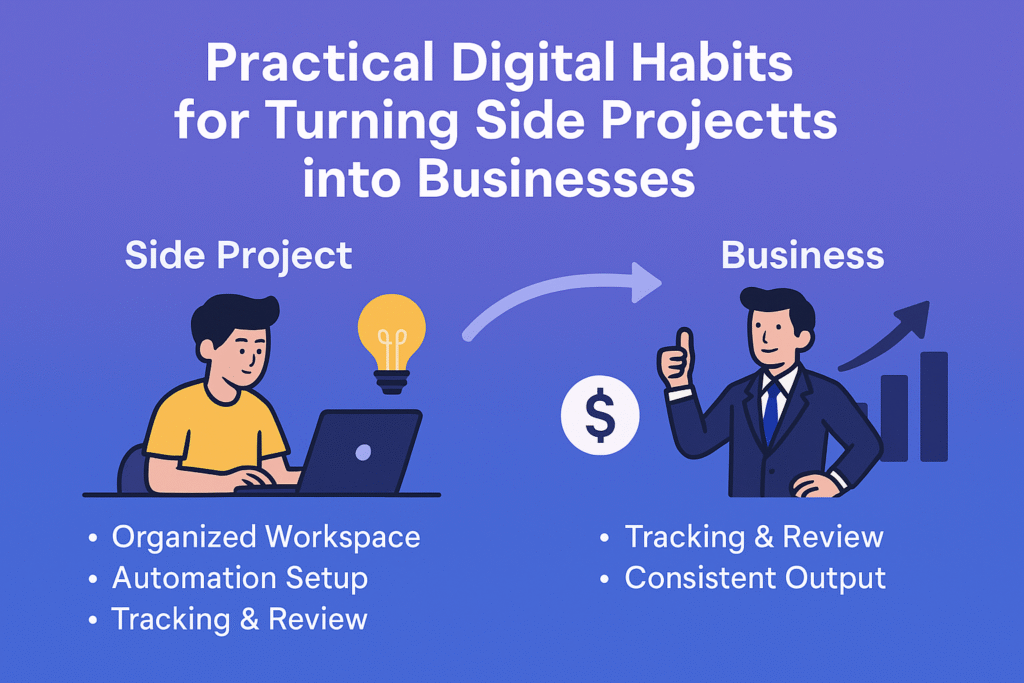If you’ve ever dreamed of transforming your weekend side project into a thriving business, you’re not alone. Many successful entrepreneurs started small — but the key difference between those who grow and those who stall often comes down to consistent, intentional digital habits.
Below, we’ll walk through habits you can adopt starting today, along with actionable examples and tools to make them part of your routine.
1. Start With a Clear Digital Workspace
First and foremost, your digital environment should support your goals.
Instead of juggling random folders and countless browser tabs, organize your tools so they’re always ready when inspiration strikes.
Example Setup:
- Use Notion or Trello to track tasks and ideas (See: The Ultimate Guide to Choosing Between Notion, Trello, and ClickUp).
- Pin your most-used apps and bookmarks in your browser for quick access.
2. Automate Repetitive Tasks
Next, save time and energy by automating routine work. This allows you to focus on tasks that truly move your project forward.
Pro Tip: Combine ChatGPT and Zapier to automate content planning (Read: How to Use ChatGPT and Zapier to Automate Your Content Calendar).
3. Track and Measure Progress
In addition, you should track your progress using digital analytics or project dashboards. Without data, you’re simply guessing.
- Use Google Analytics for website metrics.
- Set up weekly reviews in Notion.
- Consider Chrome extensions that boost productivity (Check: 10 Expert-Recommended Chrome Extensions to Maximize Productivity).
4. Build a Knowledge Bank
Furthermore, keep a central hub for all your learnings, resources, and templates. This makes it easier to scale your project into a structured business.
- Save helpful articles, prompts, and workflows.
- Experiment with AI tools to refine ideas (See: 7 Proven ChatGPT Techniques Every Advanced User Should Know).
5. Commit to Consistent Output
Finally, no habit matters more than consistent execution. Whether it’s posting weekly updates, publishing blog articles, or launching features, showing up regularly builds trust and momentum.
For more on why consistency beats short-term motivation, check out Consistency vs. Motivation: The Truth Every Creator Needs to Know.
Idea Capture → Organized Workspace → Automation Setup → Tracking & Review → Consistent Output
Think of it as a loop: each stage supports the next, and over time, this cycle turns your side project into a structured, revenue-generating business.
Final Takeaway
Side projects rarely become businesses by accident. By intentionally adopting digital-first habits, you’re setting the foundation for growth, efficiency, and long-term success.
Start with one habit this week — automate a small task, clean up your workspace, or track one metric — and expand from there.



